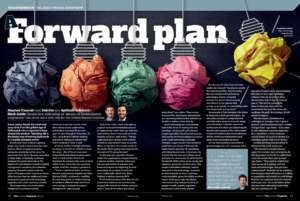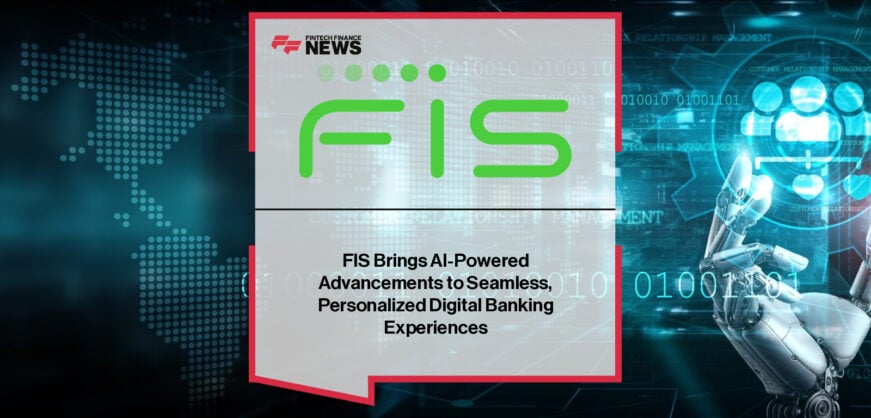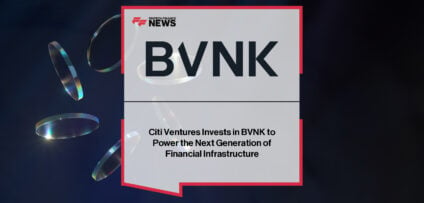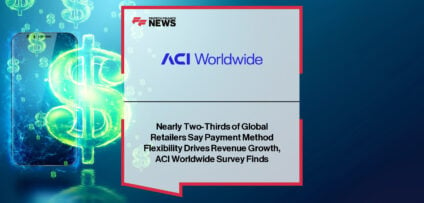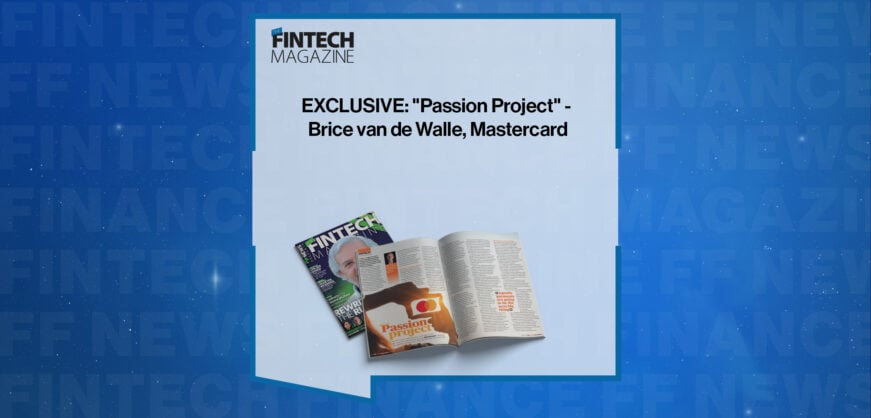Breaking News
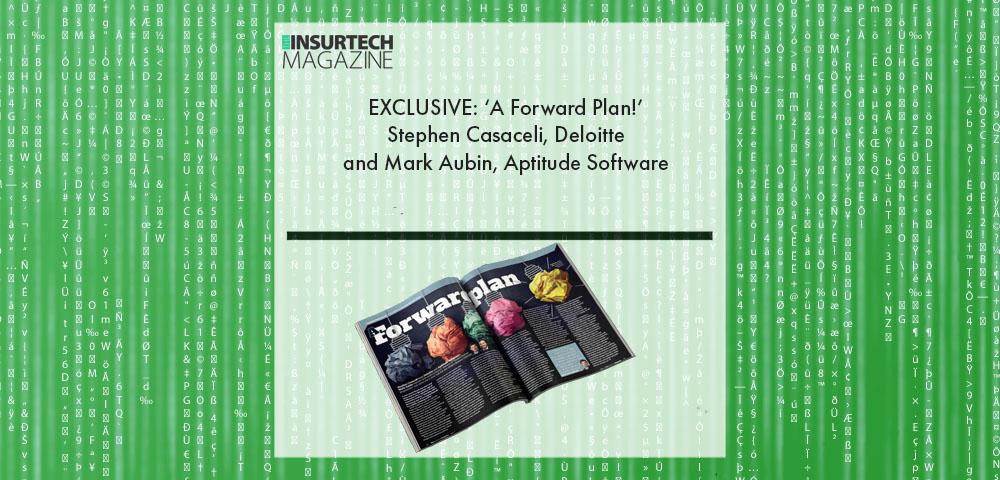
EXCLUSIVE: ‘A Forward Plan!’ – Stephen Casaceli, Deloitte and Mark Aubin, Aptitude Software in ‘The Insurtech Magazine’
Stephen Casaceli from Deloitte and Aptitude Software’s Mark Aubin discuss how embracing an ‘always-on modernisation programme’ can carve out a new role for the central finance function
It was Lauren Bacall, the smart and sassy siren from the golden age of Hollywood, who is reported to
Bacall could have read out a general ledger and made it sound sexy; but chief finance officers in legacy insurance companies would do well to carve her words into their desks. Because, according to Mark Aubin of Aptitude, a software company focussed exclusively on the digital CFO, and Stephen Casaceli of global management consultancy firm Deloitte, perpetual forward motion is now the name of the game when it comes to a back office function that has traditionally been structured around vicennial technology upgrades and a static reporting calendar.
That’s especially so in an era where merger and acquisition activity continues to set new records. Total deal volume across underwriters and brokers increased 40 per cent year-on-year through to December 31, 2021, according to Deloitte analysis, and there’s nothing to indicate that won’t continue in 2022, it said.
It’s those kinds of strategic decisions – to merge, to acquire or, indeed, to resist the same – that CFOs are now more frequently being asked to advise upon. And, in a bull market, boards are impatient for answers: they want to know within hours, not at the next quarterly review, what the company’s position is.
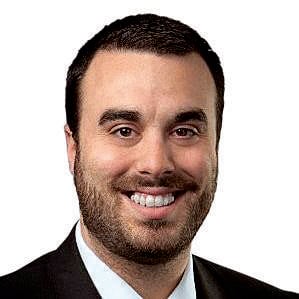
“And, if I’m a CFO, I want to be able to support my board immediately around an opportunity, rather than say ‘well, let’s wait until we close in June and see what liquidity we have’,” adds Aubin. “The big underlying piece of that is that systems should be automated in order to see the effect, in real-time, of a certain action on the books. That’s going to be huge for the innovative CFO, going forward.” It’s also going to reposition finance within the organisation; instead of being a passive number cruncher, Aubin says the new generation of actuaries and financial analysts are beginning to work proactively across departments that were traditionally siloed from them, helping to address business KPIs.
“A lot of the insurance CFOs that run our automation software are now focussed on goals like ‘how do we reduce customer churn?’, ‘how do we reduce any kind of policy blip?’,” says Aubin. “They’re true business KPIs, and finance departments are now being skilled to find solutions to be able to address them directly.”
Cloud technology has undoubtedly been a key factor in creating this new paradigm, starting with self-selected simple back office Cloud-hosted services, followed by the forced adoption of others as the wider technology landscape changed. Larger insurers have tended to build their own Cloud or followed the banks’ lead in spinning off subsidiaries with Cloud-based cores. In Germany, the Trusted German Insurance Cloud was an example of a community Cloud formed for the benefit of the entire sector, locally. But adoption, generally, has been slow. That insurers have taken a relatively cautious approach to the technology, compared to other financial services, is perhaps understandable, given the highly sensitive nature of the personally identifiable information they hold, particularly on people’s health, and the regulatory framework in which they operate.
But the case for Cloud has now been made, says Casaceli: “Insurers are seeing the value proposition, they’re seeing the cost savings and maintenance advantages, they’re seeing the security. So, now it’s about making sure there is a true cultural shift, so that, as an insurer, I’m not building what I’ve always built, just ‘up there’.”
An example of that nostalgia is the desire to hang onto a thick general ledger – the old-world concept of a comprehensive and fairly static record of accounts sitting uncomfortably in a flexible new-world
architecture and which can undermine the transformative power of the shift towards a matrix of solutions that would otherwise deliver continuous improvement and faster, more meaningful decisions.
It’s not that building a Cloud-based general ledger (GL) isn’t necessary, but a big part of Aubin’s job is demonstrating the value of more agile subledger software that can be used to drive the business, day-to-day. As Casaceli puts it: “This isn’t to confuse the three-to-five-year view with the incremental, because the vision, the roadmap, the path, the strategy, all still needs to happen.”
“But the reason we believe in a subledger so strongly is that it gives a dynamic data foundational layer to make changes from,” says Aubin. “If you need to add additional reporting segments for a regulation, or track customer activity better, it’s easier to do that in a subledger system than it is in the GL.”
It makes pitching business ideas to the board that much easier, too. “’We wanted to provide this new
is not the answer they want to hear,” says Aubin. ”They want to understand ‘how can we do it quickly, with the tools and technologies that you have implemented?’. And that can be anything from buying a book of business or making an acquisition mid-month, to small things like how can customer churn be reduced by five per cent – for multi-billion-dollar insurers, that’s substantial materiality that you can focus on.”
Casaceli has already seen a dramatic change in the way insurers consume big upgrades, not least because they’ve grown weary of the morale-sapping nature of major technology projects that deliver no
demonstrable gains in the near term.
“Now, we’re seeing more of an always-on kind of modernisation journey,” he says. “It used to be that you would buy a ledger system and implement it in house. The first thing you did was build out your FRICEW or your RICE objects, and list out the 400 ways in which you were going to completely change the system. The vendors have pretty much put the kybosh on that anyway with the restrictions they place, and rightly so.
Instead, vendors are saying, it’s about ‘what are those 20 to 40 things that really make you special, and, for the rest of it, just go with what the industry does’. We’re seeing an acceptance of that. We’re seeing that no one wants to do those customisations anymore – the maintenance on them, the upgrades, the extra time to implement. The two elements together – evidence that it can be done by insurers that are seeing the savings, and vendors imposing restrictions – is really causing this shift in a meaningful way.”
Aubin says the goal should be to empower finance teams with an ecosystem of solutions so that ‘if, a year down the road, the technology provider, the IT department or the finance department finds a better
solution, they can plug and play to get a more rapid outcome for the business driver they are looking for’.
“CFOs are telling us that they need to show incremental value,” continues Casaceli. “So, when you look at the left-to-right architecture of the organisation, there’s the data ecosystem (sometimes disparate,
sometimes more centralised), the middle area (the accounting hub or accounting rules engine, which really serves as the gateway to finance, where we take business events and turn them into accounting), and then the ledger, and I’ve seen projects start with any one of those three. At times, we’ve focussed on shoring up the data challenges before moving across; at others, we’ve started with a new GL. So there isn’t a silver bullet [in terms of where to start]. Rather, it’s about turning on all those capabilities, so
that when the next thing comes down the road – a change to your reporting situation, or statutory requirements like IFRS 17 and LDTI (long duration targeted improvements required under generally accepted accounting principles by insurance regulators in the US ) – you have those pieces in play and it’s just a matter of tweaking or modifying.
“The general ledger always got attention in the past [when it came to technology investment] because
that was pretty easy; it was the bright, shiny object of finance,” adds Casaceli. “But now we’re seeing this shift to a more sophisticated architecture, where we take in the data, usually in terms of business events, and have a centralised, governed, standardised way of translating it into accounting events, then
feeding that into the ledger.”
This ‘gateway to finance’ approach often requires going back to policy administration systems to extract the data needed to provide transparency – and that can be especially hard. The age and sheer number of these systems – particularly in life insurance where 30, 40 or 50-year terms are not unusual – is unique to this area of finance.
“Many insurers grew by acquisition and, many times, that full merge on the back end was not done. A lot of those policy admin systems are doing functions that, to be frank, not everyone understands, they just know they do them,” says Casaceli.
He forecasts a doubling down on efforts to penetrate these data fortresses: “Whether that is consolidation, movement to Cloud, maintenance, support, business process outsourcing – we know that’s probably one of the biggest challenges.”

The cumulative effect of these technology changes on those in the finance department could be significant. “It’s no longer a back-office function,” says Aubin. “The finance department has become more of a strategic advisor [by adopting] solutions that bring all the data together in a true enterprise subledger, which will automate all the compliance and reporting you need, and disseminate it, too’.
“It’s an exciting time for accountants,” he adds, “because they’re no longer focussed on compliance and reporting, but rather strategic foresight, business insights, and supporting other areas of the organisation with decisions.”
Insurers that have moved from decades of doing things the way they were because that was how they were always done, to having a finance department empowered by data, equipped with agile technology and fully integrated into business strategy, could find themselves the focus of envyand, even, desire. Their modular systems and real-time financial insight make them the new head-turners, even if they are no longer in the first flush of youth.
As an elegantly ageing Bacall also once said: “I am not a has-been. I am a will-be.”
This article was published in The Insurtech Magazine #07, Page 06-10
- EXCLUSIVE: “Passion Project” – Brice van de Walle, Mastercard in ‘The Fintech Magazine’ Read more
- FreedomPay Drives Global Merchant Innovation Read more
- FIS Brings AI-Powered Advancements to Seamless, Personalized Digital Banking Experiences Read more
- Citi Ventures Invests in BVNK to Power the Next Generation of Financial Infrastructure Read more
- Nearly Two-Thirds of Global Retailers Say Payment Method Flexibility Drives Revenue Growth, ACI Worldwide Survey Finds Read more



